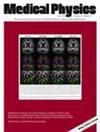Aortic dissection (AD) is a life-threatening cardiovascular emergency that is often misdiagnosed as other chest pain conditions. Physiologically, AD may cause abnormalities in peripheral blood flow, which can be detected using pulse oximetry waveforms.
This study aimed to assess the feasibility of identifying AD based on pulse oximetry waveforms and to highlight the key waveform features that play a crucial role in this diagnostic method.
This prospective study employed high-risk chest pain cohorts from two emergency departments. The initial cohort was enriched with AD patients (n = 258, 47% AD) for model development, while the second cohort consisted of chest pain patients awaiting angiography (n = 71, 25% AD) and was used for external validation. Pulse oximetry waveforms from the four extremities were collected for each patient. After data preprocessing, a recognition model based on the random forest algorithm was trained using patients' gender, age, and waveform difference features extracted from the pulse oximetry waveforms. The performance of the model was evaluated using receiver operating characteristic (ROC) curve analysis and decision curve analysis (DCA). The importance of features was also assessed using Shapley Value and Gini importance.
The model demonstrated strong performance in identifying AD in both the training and external validation sets. In the training set, the model achieved an area under the ROC curve of 0.979 (95% CI: 0.961–0.990), sensitivity of 0.918 (95% CI: 0.873–0.955), specificity of 0.949 (95% CI: 0.912–0.985), and accuracy of 0.933 (95% CI: 0.904–0.959). In the external validation set, the model attained an area under the ROC curve of 0.855 (95% CI: 0.720–0.965), sensitivity of 0.889 (95% CI: 0.722–1.000), specificity of 0.698 (95% CI: 0.566–0.812), and accuracy of 0.794 (95% CI: 0.672–0.878). Decision curve analysis (DCA) further showed that the model provided a substantial net benefit for identifying AD. The median mean and median variance of the four limbs' signals were the most influential features in the recognition model.
This study demonstrated the feasibility and strong performance of identifying AD based on peripheral pulse oximetry waveforms in high-risk chest pain populations in the emergency setting. The findings also provided valuable insights for future human fluid dynamics simulations to elucidate the impact of AD on blood flow in greater detail.


